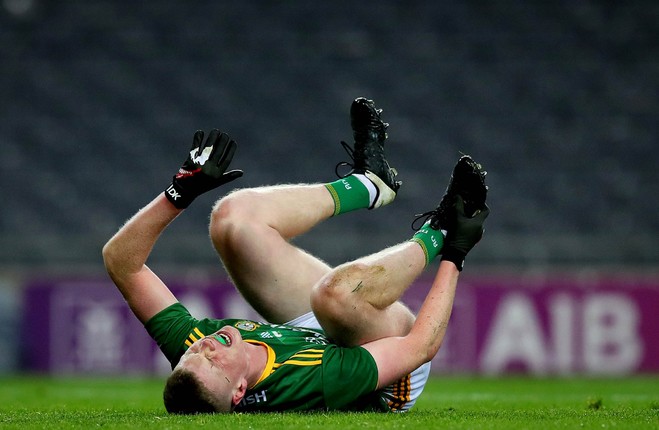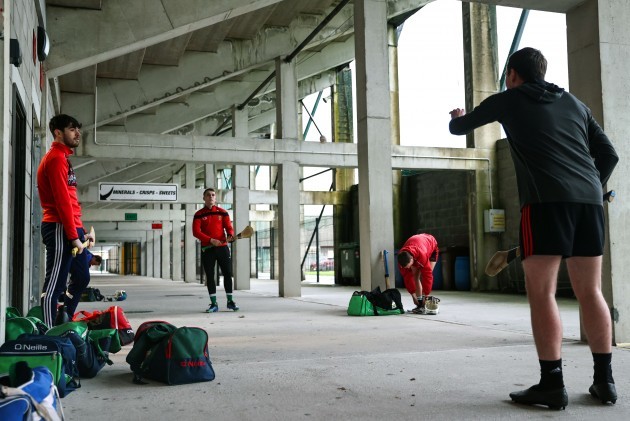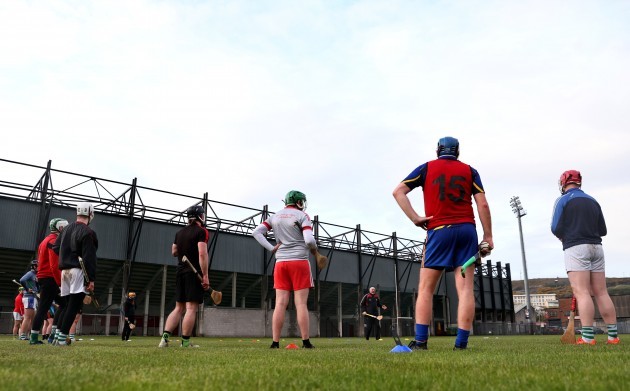DESPITE TWO SIGNIFICANT pauses of club action during 2020, there were 5,692 claims to the GAA’s player injury fund last year compared to 6,288 injuries in 2019.
Given there was no club activity permitted from March to June, and October onwards, it points to a sharp spike in injuries suffered by players after the quick return to action last summer.
To prevent a similar outcome in 2021, the GAA have designed the Be Ready To Play programme to educate players and coaches on how to physically prepare for a return to training and games in the weeks and months ahead.
The programme incorporates expert advice from a wide range of fields, including sports science, psychology, nutrition, performance analysis, skill acquisition and injury rehabilitation.
One of the leads on the Gaelic Games Sports Science Working Group that developed the programme is Des Ryan, the Galway native who has worked as head of sports medicine and athletic development at Arsenal’s academy since 2013.
Working closely with academy manager Per Mertesaker in recent years, Ryan has aided the development of the likes of Arsenal youngsters Bakayo Sako, Emile Smith-Rowe and Eddie Nkietiah.
He previously held roles at Connacht and Ireland Rugby, while he currently works as a consultant to World Rugby and the Indian Cricket Board.
A lecturer at Setanta Sports College since 2007, Ryan is moving back to Ireland to take up a new role as director of coaching and performance in the Thurles-based institution.
“The coaches and players are really important to us and we’re there to support them,” Ryan tells The42 of the Be Ready to Play. “It’s all about playing and enjoying the game, staying on the pitch. We’re there just to help that and we have to do it with the coach.”
It lasts for the entire season and has programmes to take players and coaches from individual training under the current restrictions to non-contact training in pods, full-contact training and playing games.
In Northern Ireland, non-contact training has already resumed for children and adults. It’s anticipated that adult training will have resumed by mid-May in the Republic, while U18s are back on the field from Monday.
Below, Ryan takes us through 10 tips from the programme for coaches and players of all ages to follow ahead of the return of training and games.
*****
Before training resumes…
1. Get some work done before you go back
“Within the constraints of the government guidelines, you’ve got to do some work,” Ryan says. “That’s where the Be Ready to Play programme helps out. You’ve got to complete the work (before going back) because most injuries occur from doing too much, too fast after doing too little for too long.
“In order to get ready, you’ve got the individual athletic development programme. It’s important to complete the Be Read to Play before you return. You’ve got to keep it going right throughout the season. It’s a season-long programme.”
Once training returns…
2. Complete the GAA 15 warm-up
“That’s evidence informed to reduce injuries. It’s well proven neuromuscular warm-up that helps reduce injuries. Teams can complete that at the start of the sessions once they get back.”
Check out the GAA 15 warm-up here
3. Build-up gradually over four weeks
“Or more, depending on when the fixture is and to ease back into training. For example for training games, the next step is to go from small areas to large areas. The body is used to doing very little and then suddenly going at 100%.
Ryan continues, “So if we do high intensity sprints, fitness testing and running sessions early doors, the body isn’t ready for it. It’s got to be eased in and gradually introduced to it over the first two weeks.
“You should also gradually introduce sprints. Maybe you’re only sprinting 70% in the first session, 80% the next session, 90% the next session and then you’re ready to go.”
4. Gradually introduce kicking
“Another explosive action is kicking,” he says. “So you’ve got to gradually introduce kicking and doing it in a controlled manner over shorter distances.
“Doing it in a technique way rather than high-intensity long-range kicking under huge pressure early doors. Players at the start of the session doing big long kicks and practicing for points – no.
“Control it. Ease in with it. That can cause problems and has caused other sports issues in this situation.”
5. Gradually increase the intensity of the session
“There’s a simple scale a Rate of Perceived Exertion (RPE) scale. It goes from 0-10. 10 being a match and 0 is pretty much lying on the couch.
“If you go in on your first session and it’s an RPE of 9 or 8, that’s too much. You start in the lower ranges of moderate, build up to hard and eventually you’ll get very hard when the players are used to it.”
6. Gradually introduce contact over the first few weeks
“You can do touch, controlled tackling and build up then to full tackling but for a short period of time” Ryan explains.
“Then you can increase the time you can do full contact. That’s got to be eased in as well. A lot of this messaging is going to frustrate players, but that’s a good thing.
“A key message as well is to leave the players wanting more in the first few weeks. They’ll come back, they’ll be mad for more. There’s plenty of time.”
7. Know your players
“Some players will do their programme before they go back, some won’t.
“Some players will have a high injury history so you’ve got to keep a close eye on them and maybe modify their training.
“Some players will be that bit older and age results in a heightened risk of injury so they may need to be modified in their training,” Ryan adds.
8. Communicate
“They may have things going on in their life, in their work, outside of the game. They may need to be modified.
“Some players may have done a lot and they may want to do a bit more because they’ve done the preparation and you can give them that. So communicating is hugely important.”
9. Dealing with young players
“This is particularly for those aged 12, 13 and 14,” he says. “They go through a rapid growth spurt at different times along those age groups. So you may have not seen these young players for a while.
“You’ll notice the players that have gone through a bit of a growth spurt. You’ve got to keep a close eye on them and listen out for things. So a typical theme in growth related injuries is around the heel, knee and hip. So if they’re reporting a 2/10 pain, okay you’ve got to modify the session. They need to do less. You’ll need to guide them to talk to a medical person.
“Now if they come to you and the pain around the knees, osgood schlatter’s disease is a typical one for 13 and 14 year olds, and it’s a pain of around 5/10 or more well they shouldn’t train and again should go to a medical person,” Ryan continues.
“I’m all for keeping people training and getting them training but there’s sometimes where it’s not advisable. Like those young players who’ve gone through a growth spurt, have symptoms of pain, are uncomfortable – we’ll only make it worse. So we’ve got to ease off on them and only bring them back when they’re ready.”
10. Maximise recovery
“Getting good quality sleep and nutrition. In the Be Ready to Play programme last week there was an excellent webinar on nutrition advice. Stretching, when it’s a day off having a day off and recovering fully.
“Good quality sleep and food, stretching and other recovery methods that the player finds beneficial would be good for helping them get to training.”
*****
Over the past number of years, Setanta College has had a direct impact on the numbers of GAA players undertaking strength and conditioning studies. More and more GAA players are recognising the value strength and conditioning plays in their training to have them at peak performance.
The42 is on Instagram! Tap the button below on your phone to follow us!




